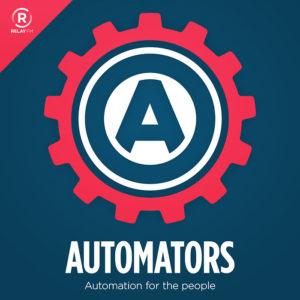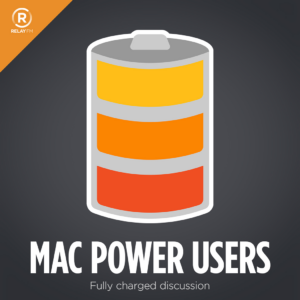I recently had a strange beta-related kernel panic on my Mac Studio. I was having trouble diagnosing the problem until I brought ChatGPT in to help. Here’s how I did it.
… This is a post for MacSparky Labs Members. Care to join? Or perhaps you need to sign in?
Automators 167: Personal Knowledge Management
Rose and I use this episode of Automators to share some of our favorite automation tips for use in personal knowledge management.
This episode of Automators is sponsored by:
- Data Citizens Dialogues: Unpacking the importance of data and its impact on the world. Listen now.
The Lab Report for November 1, 2024
In this week’s episode of The Lab Report: The new M4-powered Mac computers are here! You can get on the Apple Intelligence waitlist, Anthropic’s Claude now has a Mac app, and Oliver Burkeman’s latest book, one chapter per day.
… This is a post for MacSparky Labs Members. Care to join? Or perhaps you need to sign in?
An Automation Golden Age
Did you know I have a newsletter? I post some, but not all of my newsletter’s content to this blog. Here’a a recent one.
An Automation Golden Age
I’ve mentioned several times on my podcasts that we’re experiencing a renaissance in automation, particularly on the Mac. This shift isn’t driven by a single tool but rather by the interoperability of a collection of tools.
AppleScript has been available on the Mac for decades, offering significant automation opportunities if you want to learn it. AppleScript allows users to connect applications and work with the same data to accomplish unified tasks. However, for many, learning AppleScript was a challenge. Programmers found it too different from traditional programming languages, and non-programmers struggled with its syntax. As a result, AppleScript adoption remained relatively small.
Apple and Sal Soghoian introduced Automator in early 2005 to address this, bringing drag-and-drop automation with its original version. Meanwhile, tools like Keyboard Maestro and Hazel, developed outside of Apple, have been actively filling the gaps in Apple’s automation solutions for years.
Then came Shortcuts (né Workflow). Initially developed for iOS, Shortcuts is now firmly embedded in the Mac ecosystem. It’s a spiritual (if not direct) descendant of Automator, and in recent years, these tools have learned to work together. You can run Keyboard Maestro macros from Shortcuts, and Shortcuts can be triggered from within Hazel. Users can now mix and match these tools to create robust automation chains, combining the strengths of each.
For those willing to invest the time to master—or at least gain a working knowledge of—these tools, few tasks on the Mac can’t be automated today.
The next big shift in this process is the integration of artificial intelligence. AI is already proving useful in helping generate automation, but if Apple Intelligence can fully tap into user data while still protecting user privacy and integrate it with Shortcuts, we could see a new era of powerful, personalized automation. This leap could be as significant as the jump from AppleScript to Automator. Of course, this depends on Apple getting both Apple Intelligence and the integration right, but I suspect this is already on the big whiteboard in Cupertino.
Shortcuts and Apple Intelligence both use the Intents system to work their magic. Developers who build for Shortcuts benefit from Apple Intelligence and vice versa. With this common architecture, I believe Apple will eventually tighten the connections between Shortcuts and Apple Intelligence. It won’t happen overnight, but over the coming years, I expect this combination to become the next frontier of automation in the Apple ecosystem.
The 16GB MacBook Air
A surprising bit of news this week was that Apple doubled the base memory on the M2 and M3 MacBook Air. Before this week, if you bought the entry-level model, you got 8GB. That has now increased to 16. I’m sure this is entirely attributable to Apple Intelligence. 8 gigabytes simply isn’t enough to run those AI models and keep the computer running. Whatever the reason, I’m glad they finally did it.
When my daughter bought a new MacBook Air a few months ago, I counseled her to upgrade primarily because of the base model’s woeful 8GB of memory. This also came up in a recent MacSparky Labs event: the importance of memory when purchasing a new Mac.
My general experience in dealing with Labs members and podcast listeners is that people upgrade their computers because of a lack of storage. The base models don’t have much of it, and between our photo libraries and other bits of large data, we fill it up pretty quickly. For many folks, it’s not that the computer is running too slowly; it doesn’t have enough storage to keep up with them.
However, I expect that in the future, memory could become a similar problem. Apple is only at the beginning of its Apple Intelligence journey, and the AI models will only get bigger. Fast forward a few years, and the reason you need to upgrade your computer might simply be that it doesn’t have enough memory. I’m glad Apple is taking care of this problem on the low end, but when buying a new Mac, particularly if you’re looking toward longevity it may now make sense to upgrade both the storage and the memory a bit more than you think is necessary.
The M4 MacBook Pro
Hooray! The new M4 MacBook Pro is here. The case design is the same in both 14- and 16-inch variants, with support for the M4, M4 Pro, and M4 Max chips with increased CPU/GPU performance.
It’s nice to see Apple improving on the built-in camera, which is now 12MP, including support for Center Stage and Desk View. Like the Mac mini, announced yesterday, it includes Thunderbolt 5 support. You can get it with up to 128GB of memory. The device promises 24-hour battery life on certain models.
The MacBook Pro screens continue to be a highlight, with up to 120Hz refresh and an option for Nano-texture. When will Apple bring the tech they are using in the MacBook Pro to a stand-alone monitor?
If you’ve been waiting for a new MacBook Pro, you won’t be disappointed with this one. If you are still on the Intel architecture, this is a no-brainer. If you are on Apple silicon, it’s more of a head-scratcher. Make sure the new device will result in a noticeable performance improvement before upgrading.
The New Mac mini & iMac Lineup
This week, Apple introduced a wave of M4 Macs, bringing some exciting updates.
New iMacs
The M4-powered iMacs come in refreshed colors: orange, blue, green, yellow, pink, purple, and silver, each with matching accessories. Apple’s design flexibility shows, though it makes the grayscale of other devices feel more mundane. The iMac lineup now starts with 16GB of memory, upgradeable to 32GB, and offers four Thunderbolt 4 ports in high-end models. A $200 Nano-texture glass option is also available.
The New Mac mini
Compact yet powerful, the new Mac mini now includes M4 and M4 Pro chips in a 5×5 inch (12.7×12.7 cm) frame, with support for Thunderbolt 5. Configurable with up to 64GB of memory, with two front-facing USB-C ports, it starts at $599 — a stellar value.
These new Macs are inspiring. The iMac colors are tempting, even if not quite my fit, and the compact Mac mini with front-facing ports will likely become a popular desktop choice.
Mail Sorting with Apple Intelligence
With the release of iOS 18.2 Beta 1, we’re getting our first look at Apple Intelligence-based inbox sorting in Mail. In this video I share how it work and my initial impressions.
… This is a post for MacSparky Labs Members. Care to join? Or perhaps you need to sign in?
Testing NotebookLM
Here are some of my early tests using NotebookLM, Google’s new tool that lets me create an AI-assisted podcast based on the data I feed it. … This is a post for the Early Access and Backstage MacSparky Labs Members. Care to join? Or perhaps you need to sign in?
Mac Power Users 768: Getting Intentional with Chris Bailey
Author Chris Bailey joins Mac Power Users to discuss his simple tech stack and interesting automation to tie it all together.
This episode of Mac Power Users is sponsored by:


